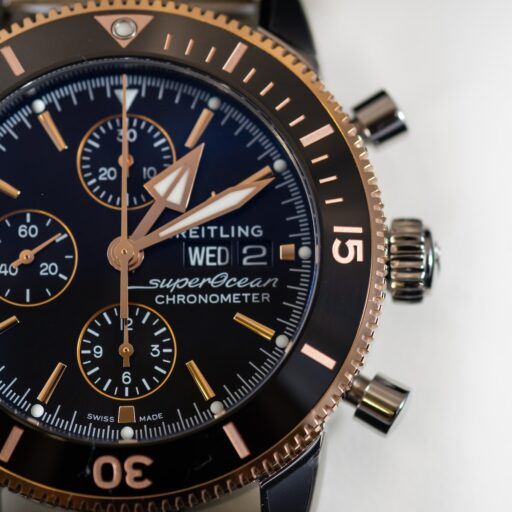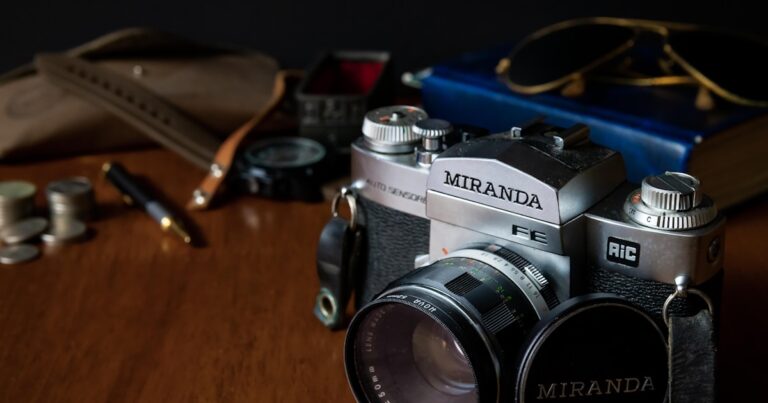Support our educational content for free when you purchase through links on our site. Learn more
When Did Wrist Watches Become Fashionable? Discover 10 Key Moments That Changed Time! ⌚✨

Have you ever wondered how a simple timekeeping device transformed into a must-have fashion accessory? The journey of wristwatches is as fascinating as it is complex, intertwining with historical events, cultural shifts, and technological innovations. From the delicate wrist adornments of the 19th century to the robust tool watches of World War I, the evolution of wristwatches reflects changing societal norms and personal expression.
In this article, we’ll explore 10 pivotal moments that marked the rise of wristwatches as fashionable items, revealing how they went from mere practicality to symbols of style and status. Did you know that the first modern wristwatch was created for a countess? Or that World War I soldiers played a crucial role in popularizing wristwatches among men? Buckle up as we dive into the captivating history of wristwatches and discover how they became the fashionable staples we know today!
Key Takeaways
- Wristwatches began as jewelry for women before becoming practical timepieces for men during the late 19th century.
- World War I significantly influenced the adoption of wristwatches due to their practicality in military settings.
- Iconic models like the Cartier Tank and Rolex Submariner have shaped wristwatch culture and style.
- The rise of smartwatches is redefining the wristwatch market, blending technology with traditional aesthetics.
- Sustainability is becoming a key focus for modern watch brands, reflecting consumer demand for ethical practices.
Ready to explore the world of wristwatches? 👉 Shop Luxury Watch Brands: Amazon | Walmart | Etsy.
Table of Contents
Quick Tips and Facts
The Evolution of Timekeeping: A Historical Overview
Early Beginnings: From Pocket Watches to Wrist Watches
The Rise of Wrist Watches: Fashion Meets Function
The Impact of World Wars on Watch Fashion
Iconic Wrist Watches That Changed the Game
The Role of Celebrities and Influencers in Watch Trends
Modern Innovations in Watch Design and Technology
Wrist Watches as Fashion Statements: A Cultural Perspective
Collecting Wrist Watches: Tips for Enthusiasts
The Future of Wrist Watches: Trends to Watch For
Conclusion
Recommended Links
FAQ
Reference Links
Quick Tips and Facts
- Fact: The earliest wristwatches were primarily designed for women as jewelry pieces. (Source)
- Tip: When choosing a wristwatch, consider factors like size, style, and functionality to match your personal preferences and needs. (Related Article)
- Fact: The two World Wars significantly impacted the popularity and design of wristwatches for men. (Source)
- Tip: Explore different watch movements, such as mechanical, automatic, and quartz, to understand their unique characteristics and choose the best fit for you.
- Fact: Smartwatches are the latest evolution in wristwatch technology, offering various features beyond timekeeping. (Source)
The Evolution of Timekeeping: A Historical Overview
Timekeeping has come a long way, hasn’t it? From sundials to atomic clocks, humanity’s quest to measure time has driven incredible innovation. This journey is intricately linked with the development of the wristwatch, a device that evolved from a piece of jewelry to a sophisticated instrument and fashion statement. Explore our Watch History and Evolution category for a deeper dive into this fascinating subject.
From Sundials to Clocks
Imagine relying on the sun’s position to tell time! Sundials were the earliest timekeeping devices, but their accuracy depended on clear skies. Then came mechanical clocks, revolutionizing time measurement with gears and weights. These early clocks, often found in town squares or grand estates, announced the time with loud chimes, a far cry from the discreet ticking of a wristwatch.
The Emergence of Portable Timepieces
The miniaturization of clocks led to the creation of portable timepieces. These early portable clocks were large and cumbersome, but they paved the way for the pocket watch. As clothing styles evolved, pockets became a standard feature, and the pocket watch found its perfect home. Learn more about the transition from pocket watches to wristwatches in our dedicated article: When did wrist watches become popular?.
Early Beginnings: From Pocket Watches to Wrist Watches
The journey from pocket watch to wristwatch is a fascinating tale of innovation and changing social norms. Initially, wristwatches were primarily seen as feminine accessories, often adorned with jewels and intricate designs. Men, on the other hand, favored the practicality and status associated with pocket watches. But the winds of change were blowing…
The First Wristwatches
The exact origin of the wristwatch is shrouded in some mystery. Some historians credit Queen Elizabeth I with owning an early form of a wristwatch, a gift from Robert Dudley in 1571. However, these early examples were more akin to jewelry than practical timekeeping devices. It wasn’t until the late 19th century that wristwatches began to gain traction.
Patek Philippe and the Dawn of Modern Wristwatches
Patek Philippe, a renowned name in Luxury Watch Brands, is often credited with creating one of the first modern wristwatches in 1868, commissioned by Countess Koscowicz of Hungary. This marked a significant step towards the wristwatch as we know it today.
The Rise of Wrist Watches: Fashion Meets Function
Several factors contributed to the rise of wristwatches. One pivotal moment was the Boer War (1899-1902), where the convenience of having a watch on the wrist became apparent to soldiers. No more fumbling for a pocket watch in the heat of battle! This practical advantage propelled the wristwatch into the mainstream.
World War I and the Solidification of Wristwatches
World War I further cemented the wristwatch’s place in men’s fashion. The need for precise time synchronization in military operations made wristwatches indispensable. Soldiers returning home from the war continued wearing their wristwatches, influencing civilian fashion trends. The wristwatch had become a symbol of masculinity and practicality.
The Roaring Twenties and the Art Deco Influence
The 1920s witnessed a surge in wristwatch popularity. The Art Deco movement, with its emphasis on geometric shapes and elegant designs, heavily influenced watch styles. Wristwatches became more than just timekeeping tools; they were fashion statements, reflecting the era’s exuberance and glamour.
The Impact of World Wars on Watch Fashion
The World Wars had a profound impact on watch design and functionality. Military requirements led to innovations in durability, water resistance, and legibility. The demand for reliable timekeeping under harsh conditions pushed watchmakers to develop robust and precise instruments.
The Rise of Tool Watches
The need for specialized timekeeping tools gave birth to iconic “tool watches” like dive watches and pilot’s watches. These watches were designed with specific functionalities to aid professionals in their respective fields. For example, dive watches featured enhanced water resistance and rotating bezels for tracking dive times, while pilot’s watches emphasized legibility and chronograph functions for navigation.
Military-Inspired Designs
Military aesthetics began to influence mainstream watch designs. Features like luminous dials, rugged cases, and simple, utilitarian designs became popular, reflecting the wartime era’s emphasis on practicality and functionality. This trend continues to this day, with many modern watches drawing inspiration from classic military timepieces.
Iconic Wrist Watches That Changed the Game
Throughout history, certain wristwatches have transcended their utilitarian purpose and become cultural icons. These watches, often associated with historical events, influential figures, or groundbreaking innovations, have shaped the watch industry and continue to inspire watch enthusiasts today.
The Cartier Tank
The Cartier Tank, designed by Louis Cartier in 1917, is a timeless classic. Its rectangular case, inspired by the Renault tanks of World War I, was a departure from traditional round watch designs. The Tank has adorned the wrists of numerous celebrities and historical figures, solidifying its status as an icon of elegance and sophistication.
The Rolex Submariner
The Rolex Submariner, launched in 1953, is the quintessential dive watch. Its robust construction, water resistance, and rotating bezel made it a favorite among divers and adventurers. The Submariner’s iconic design has remained largely unchanged over the decades, a testament to its enduring appeal.
The Omega Speedmaster
The Omega Speedmaster, famously worn by astronauts on the moon, is a symbol of human achievement and exploration. Its precision and reliability under extreme conditions earned it the nickname “Moonwatch.” The Speedmaster’s legacy continues to inspire watch enthusiasts and collectors alike. Explore more iconic watches in our Watch Brand Comparisons category.
The Role of Celebrities and Influencers in Watch Trends
Celebrities and influencers have played a significant role in shaping watch trends. Their endorsements and personal style choices can influence consumer preferences and elevate certain watch brands or models to iconic status.
Product Placements and Brand Ambassadorships
Many watch brands collaborate with celebrities as brand ambassadors or feature their products in movies and television shows. These product placements can generate significant buzz and create a sense of desirability around specific watches. For example, James Bond’s association with Omega watches has contributed to the brand’s popularity and image.
Social Media and the Rise of Watch Influencers
Social media platforms like Instagram and YouTube have given rise to a new breed of watch influencers. These individuals, often with a passion for horology, share their knowledge and opinions on watches, influencing their followers’ purchasing decisions. The power of social media in shaping watch trends is undeniable.
Modern Innovations in Watch Design and Technology
The watch industry is constantly evolving, with new innovations in design and technology pushing the boundaries of what a wristwatch can be. From advanced materials to smart functionalities, modern watches offer a blend of style, functionality, and cutting-edge technology.
Smartwatches and Connected Devices
Smartwatches, like the Apple Watch and Samsung Galaxy Watch, have revolutionized the wearable technology landscape. These devices offer a range of features beyond traditional timekeeping, including fitness tracking, notifications, and even mobile payments. The integration of smart technology into wristwatches has blurred the lines between timepiece and personal assistant.
New Materials and Manufacturing Techniques
Watchmakers are experimenting with new materials like ceramic, titanium, and carbon fiber to create lighter, stronger, and more durable watches. Advanced manufacturing techniques, such as 3D printing, are also being employed to create intricate and complex watch components.
Wrist Watches as Fashion Statements: A Cultural Perspective
Wristwatches have transcended their functional purpose and become powerful symbols of personal style, status, and cultural identity. They can communicate a person’s taste, values, and even their aspirations.
The Psychology of Watch Wearing
Why do people wear watches? For some, it’s a practical necessity. For others, it’s a way to express their individuality and make a statement. Watches can be seen as extensions of oneself, reflecting one’s personality and sense of style. Explore our Guide to Buying Watches for insights into choosing the perfect watch to express your unique style.
Watches as Status Symbols
Certain watch brands, particularly luxury brands, are associated with status and prestige. Owning a high-end watch can be a symbol of success and achievement. The craftsmanship, materials, and exclusivity of these watches contribute to their perceived value and desirability.
Collecting Wrist Watches: Tips for Enthusiasts
Collecting wristwatches can be a rewarding hobby, combining a passion for horology with the thrill of the hunt for rare and valuable timepieces. Whether you’re a seasoned collector or just starting out, here are some tips to guide you on your collecting journey.
Building a Collection with Purpose
Before you start buying watches, define your collecting goals. What are you interested in? Vintage watches? Specific brands? Limited editions? Having a clear focus will help you build a cohesive and meaningful collection.
Research and Authentication
Thorough research is essential when collecting watches. Learn about different brands, models, and historical periods. Be wary of counterfeits and always authenticate watches before making a purchase. Reputable dealers and auction houses can provide expert authentication services. Check out our Men’s Watches category for inspiration and information on various watch brands and models.
The Future of Wrist Watches: Trends to Watch For
The future of wristwatches is exciting and full of possibilities. As technology continues to advance, we can expect to see even more innovative and groundbreaking developments in the watch industry.
Hybrid Smartwatches
Hybrid smartwatches combine the classic aesthetics of traditional watches with smart functionalities. These watches offer a discreet way to stay connected without sacrificing style. They often feature subtle notifications and fitness tracking capabilities while retaining the elegance of a traditional timepiece.
Sustainability and Ethical Sourcing
Consumers are increasingly conscious of the environmental and social impact of their purchases. Watch brands are responding to this trend by incorporating sustainable materials and ethical sourcing practices into their production processes. We can expect to see more watches made from recycled materials or produced with a focus on minimizing environmental impact.
Conclusion

In conclusion, the journey of wristwatches from mere timekeeping devices to essential fashion statements is a fascinating tale woven through history, culture, and technology. Wristwatches have evolved significantly, influenced by societal changes, technological advancements, and the impact of global events like the World Wars. They have become symbols of style, status, and personal expression.
Key Takeaways:
- Positives: Wristwatches offer practicality, style, and a way to express individuality. They have adapted to modern needs with innovations like smart technology and sustainable practices.
- Negatives: The proliferation of smartwatches may overshadow traditional timepieces, and the luxury market can sometimes feel exclusive or inaccessible.
Ultimately, whether you’re a seasoned collector or a casual wearer, there’s a wristwatch out there that can resonate with your personal style and needs. So, keep exploring and find the perfect timepiece that tells your story! ⌚✨
Recommended Links
- 👉 Shop Luxury Watch Brands: Amazon | Walmart | Etsy
- Explore Iconic Watches: Cartier Official Website | Rolex Official Website | Omega Official Website
- Books on Watch History:
FAQ

What are the key factors that contributed to the rise of wristwatches as a fashion accessory?
The Shift from Practicality to Style
The rise of wristwatches as fashion accessories can be attributed to several key factors:
- Military Influence: During World War I, soldiers needed practical timekeeping solutions, leading to the widespread adoption of wristwatches.
- Cultural Shifts: The post-war era saw a shift in fashion, with wristwatches becoming symbols of modernity and sophistication.
- Celebrity Endorsements: Influential figures and celebrities have played a significant role in popularizing wristwatches as fashion statements, showcasing them in various media.
How did the evolution of wristwatch design impact their popularity among different social classes?
Design as a Reflection of Status
Wristwatch design has evolved to cater to various social classes:
- Luxury Brands: High-end brands like Rolex and Patek Philippe have created exclusive designs that appeal to affluent consumers, making wristwatches status symbols.
- Affordable Options: The introduction of more affordable brands and styles has made wristwatches accessible to a broader audience, allowing people from different social classes to embrace this fashion accessory.
In what ways did World War I influence the adoption of wristwatches as a practical and fashionable timekeeping solution?
Practicality Meets Style
World War I was pivotal in the adoption of wristwatches:
- Practical Necessity: Soldiers found wristwatches more practical than pocket watches for quick time checks in the trenches.
- Post-War Fashion: After the war, returning soldiers continued wearing wristwatches, which transitioned into civilian fashion, blending practicality with style.
What role did luxury watch brands play in popularizing wristwatches as a status symbol and fashion statement?
The Power of Branding
Luxury watch brands have significantly influenced the perception of wristwatches:
- Exclusivity and Craftsmanship: Brands like Cartier and Omega emphasize quality craftsmanship and exclusivity, making their watches desirable among affluent consumers.
- Cultural Significance: Luxury watches are often featured in films and worn by celebrities, reinforcing their status as symbols of success and sophistication.
How have technological advancements influenced the wristwatch market?
The Shift to Smart Technology
Technological advancements have transformed the wristwatch market:
- Smartwatches: The rise of smartwatches has introduced features like fitness tracking and notifications, appealing to tech-savvy consumers.
- Hybrid Models: Many brands are now creating hybrid models that blend traditional aesthetics with modern technology, catering to a diverse audience.
What are the future trends in wristwatch design and functionality?
Looking Ahead
The future of wristwatches is promising:
- Sustainable Practices: Brands are increasingly focusing on sustainability, using eco-friendly materials and ethical sourcing.
- Customization: Consumers are seeking personalized options, leading to a rise in customizable watches that reflect individual tastes.





